Related Research Articles

Iran's telecommunications industry is almost entirely state-owned, dominated by the Telecommunication Company of Iran (TCI). Fixed-line penetration in 2004 was relatively well-developed by regional standards, standing at 22 lines per 100 people, higher than Egypt with 14 and Saudi Arabia with 15, although behind the UAE with 27. Iran had more than 1 mobile phone per inhabitant by 2012.

The IKCO Samand is an Iranian sedan produced by IKCO. The Samand production project began in 2001 and the first car was sold in 2001. The Samand inherits the mantle of Iran's national automobile from the Paykan, which was sold by Iran Khodro from 1967 to 2005.

Iran Shipbuilding & Offshore Industries Complex Co (ISOICO) is an Iranian ship yard, located in the Persian Gulf, Strait of Hormuz, active as shipbuilder and ship-repairer of different types of vessels and offshore structures. ISOICO is a subsidiary of IDRO.

The Islamic Councils, formerly known as the Provincial Societies are local councils which are elected by public vote in all cities and villages throughout Iran. Council members in each city or village are elected by direct public vote to a 4-year term.
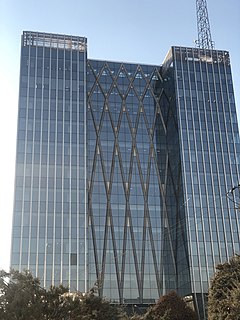
The Tehran Stock Exchange (TSE) is Iran's largest stock exchange, which first opened in 1967. The TSE is based in Tehran. As of May 2012, 339 companies with a combined market capitalization of US$104.21 billion were listed on TSE. TSE, which is a founding member of the Federation of Euro-Asian Stock Exchanges, has been one of the world's best performing stock exchanges in the years 2002 through 2013. TSE is an emerging or "frontier" market.

The National Petrochemical Company (NPC), a subsidiary to the Iranian Petroleum Ministry, is owned by the government of the Islamic Republic of Iran. It is responsible for the development and operation of the country's petrochemical sector. Founded in 1964, NPC began its activities by operating a small fertilizer plant in Shiraz. Today, NPC is the second largest producer and exporter of petrochemicals in the Middle East. Over these years, it has not only expanded the range and volume of its products, but it has also taken steps in areas such as R&D to achieve more self-sufficiency.
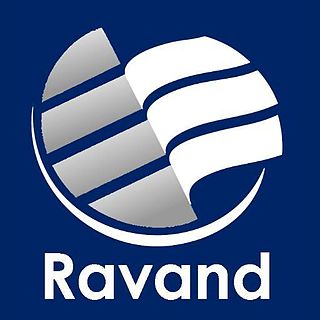
The Ravand Institute for Economic and International Studies is the first Iranian think tank of its kind. It is an independent, private, non-partisan, non-governmental organization focusing on important policy issues facing Iran.

Western Taiwan Straits Economic Zone or West Coast Economic Zone is the proposed economic development zone for the economic region west of the Taiwan Straits by the Fujian government and the Chinese central government. This include the coastal cities of Xiamen, Zhangzhou, Quanzhou and Fuzhou along Fujian province.
The National Iranian Tanker Company is a subsidiary of the National Iranian Oil Company, which was privatized in 2009. As of 2011, NITC was owned by funds managing pensions for 5 million Iranians. It is the biggest tanker company in the Middle East. The company transports Iranian crude to export markets and also engages in cross-trading of crude oil cargoes for some 150 oil majors worldwide, including Royal Dutch Shell, TotalEnergies, Saudi Aramco and state-run producers in Kuwait and Abu Dhabi. NITC has a capacity of 11 million tons per year.

Zonuz is a city in the Central District of Marand County, East Azerbaijan Province, Iran. At the 2006 census, its population was 2,618, in 826 families.

Prior to 1979, Iran's economic development was rapid. Traditionally an agrarian society, by the 1970s the country had undergone significant industrialization and economic modernization. This pace of growth had slowed dramatically by 1978 as capital flight reached $30 to $40 billion 1980 US dollars just before the revolution.

The Nasr-1 is an Iranian anti-ship cruise missile. According to its export catalog, it can destroy 1,500-tonne targets such as small frigates. Nasr-1 missile can be launched from both inland bases and offshore military vessels, and is being modified to be fired from helicopters and submarines.
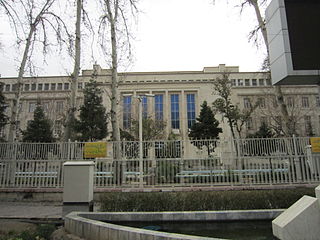
The Ministry of Economic Affairs and Finance's functions are:
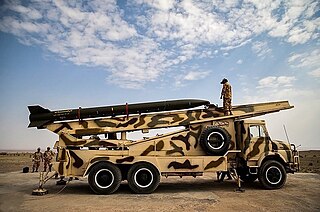
The Naze'at 6-H and Naze'at 10-H/Mushak-120/Iran-130 are two Iranian long-range artillery rockets with ranges of about 100 km. The Naze'at 10-H is larger, more powerful, and has a longer range than the Nazeat 6-H. Like Iran's similar shaped Zelzal rockets, Naze'at rockets do not have a guidance system. Both systems are also widely known without the -H suffix, as the Naze'at 6 and Naze'at 10. The Iranians also have developed another 500 kg version called the Mushak-160 with 160 km range.
Hossein Alavi is an Iranian football player He has just played 13 minutes in his entire career before joining Esteghlal which made his signing heavily criticised by media. It has been reported that a member of The Iranian Parliament had pressured Ali Fathollahzadeh to sign Alavi, which he rejects.
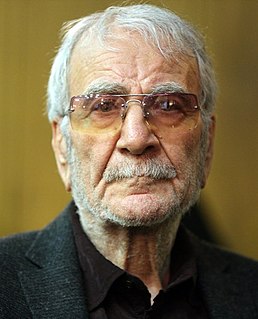
Gholam-hossein Ebrahimi Dinani is an Iranian philosopher. He is best known for his research and writings about illuminationism and Shahab al-Din Suhrawardi. The three-time winner of Book of the Year award in Iran, Dinani is a professor emeritus at the University of Tehran, and lectures at Tarbiat Modares University and Ferdowsi University of Mashhad. Moreover, his public lectures at Institute for Research in Philosophy attract a diverse audience from students and scholars of theology and philosophy in general.
The Noor or Arash 3 is an Iranian 122 mm fin-stabilized artillery rocket. It is speculated to be an Iranian variant of a Chinese or Russian 122 mm artillery rocket.
References
- ↑ "صفحه اصلي ایران کد®". www.irancode.ir.
- ↑ http://www.iran-daily.com/1387/3194/html/economy.htm . Retrieved 2010-07-06.
{{cite web}}: Missing or empty|title=(help)[ dead link ] - ↑ http://www.nitc.co.ir/iran-daily/1388/3438/html/economy.htm#s389754%5B%5D